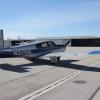Dripping oil after oil change
-
Members Online
- IvanP
- Paul Thomas
- Smiles201
- richardbrochu27
- 201Steve
- BobbyH
- Gee Bee Aeroproducts
- Flyler
- DXB
- gabez
- MooneyPoor
- Patrick Horan
- south
- ProtoFly
- Matthew P
- eman1200
- hammdo
- glbtrottr
- BeachLifeMoon
- jetdriven
- Ragsf15e
- Lois
- Jetter2
- MikeOH
- TCC
- 0TreeLemur
- varlajo
- bixmooney
- JoMo
- TangoTango
- AF M20J
- ArtVandelay
- dzeleski
- Jim F
- chrisburdzy98
- rahill
- jcavazos
- Z W
- Speed Merchant
- Glen Davis
- EricJ
- Skyland


Recommended Posts
Join the conversation
You can post now and register later. If you have an account, sign in now to post with your account.